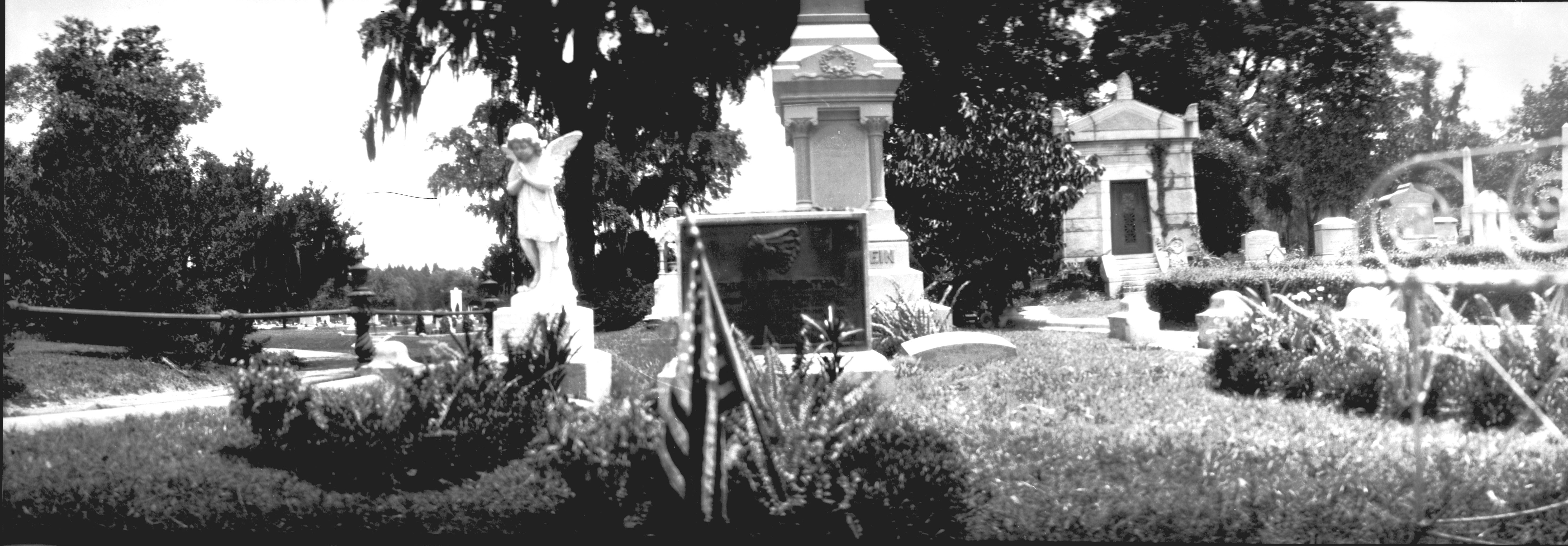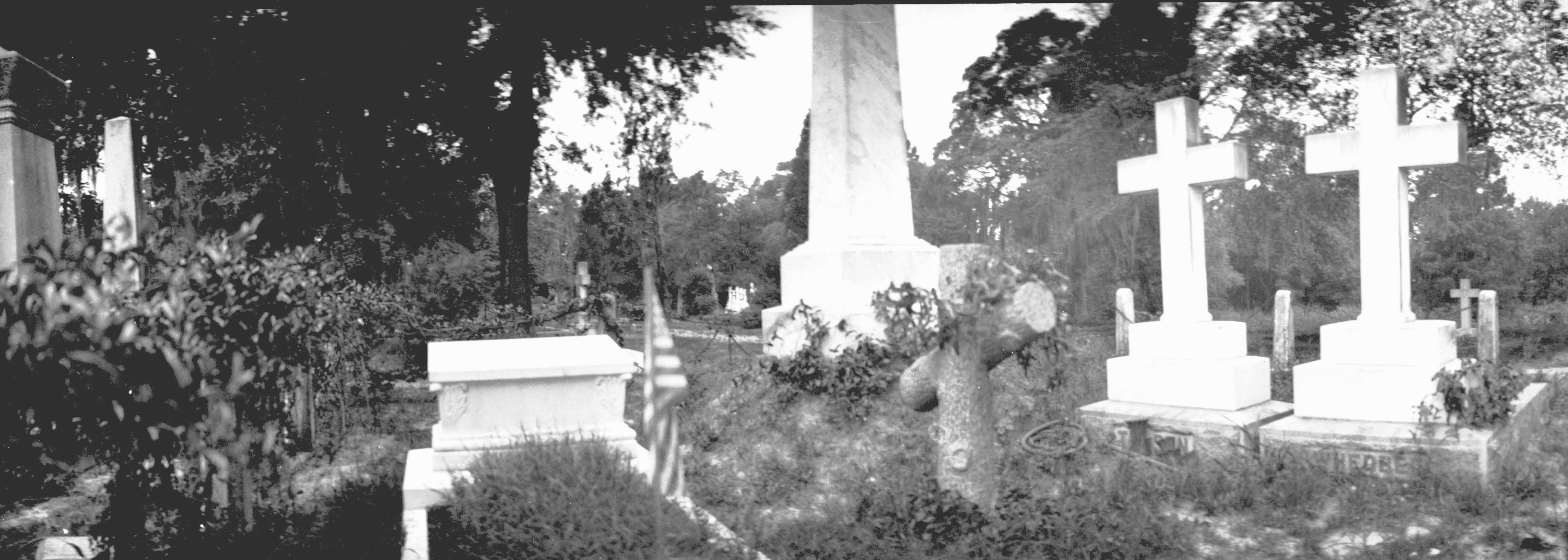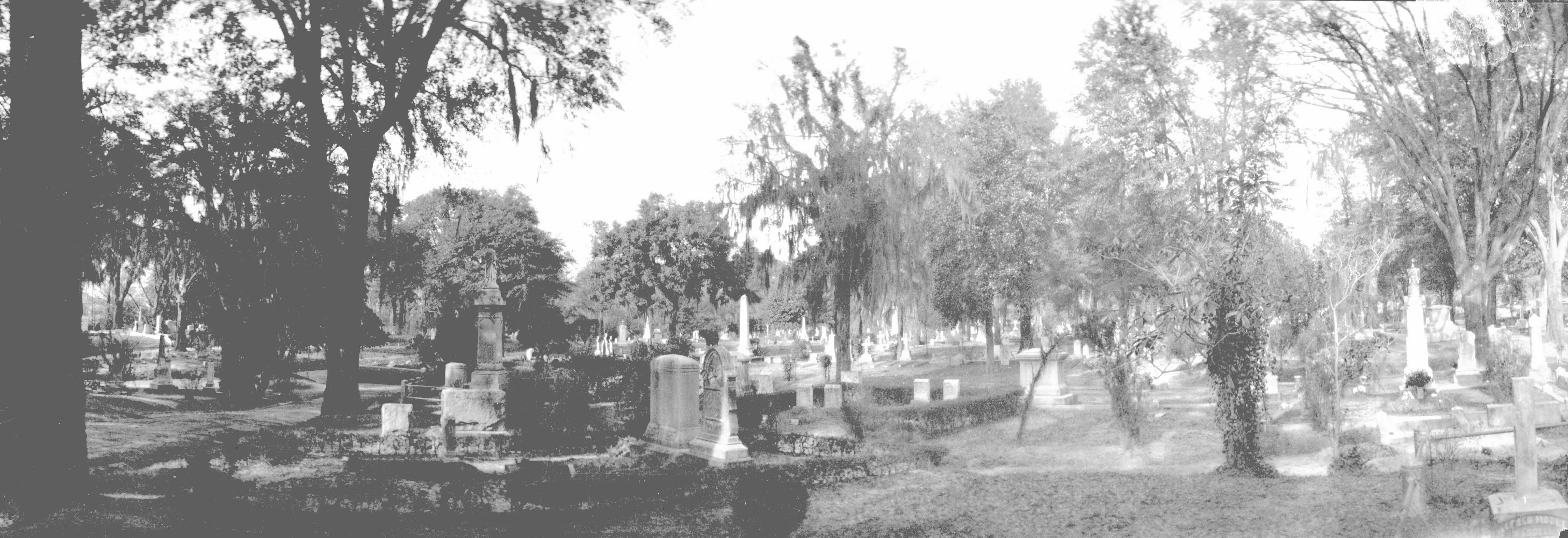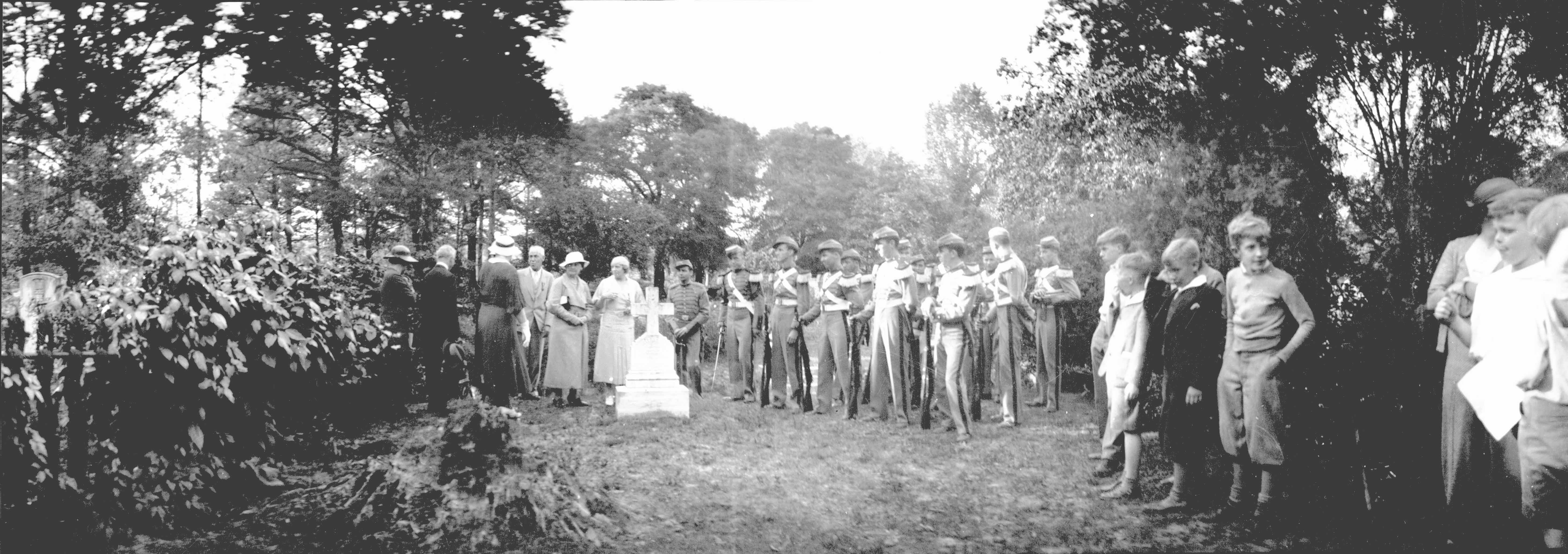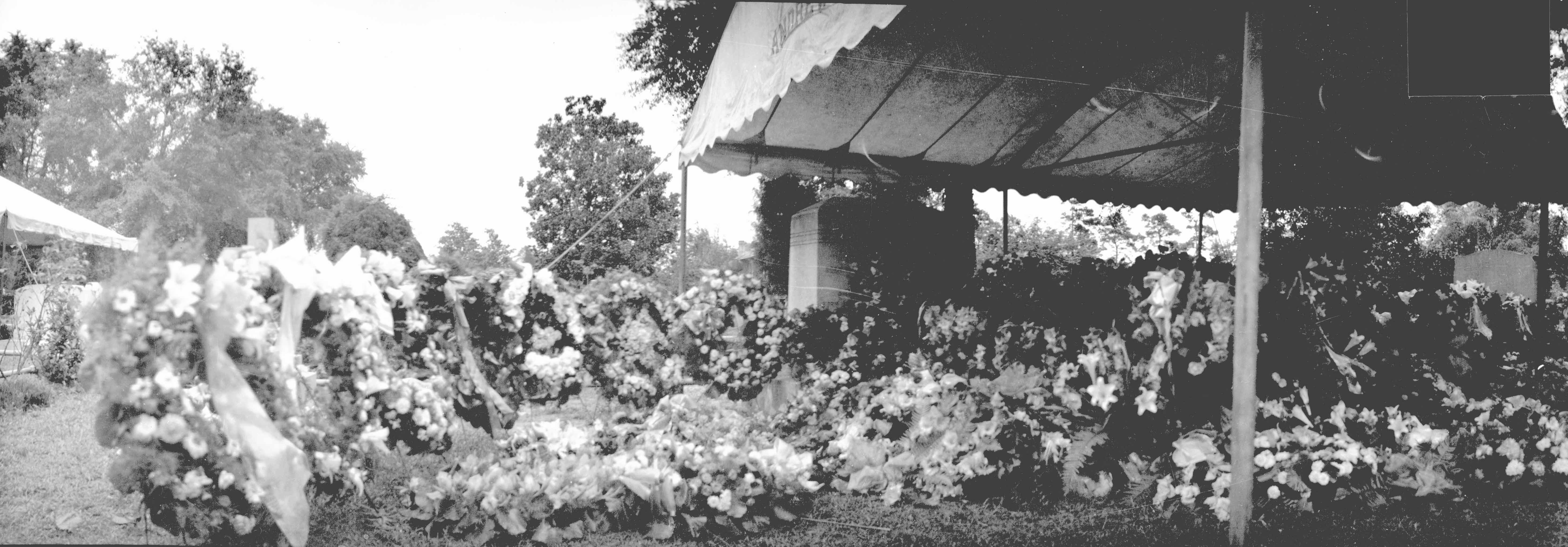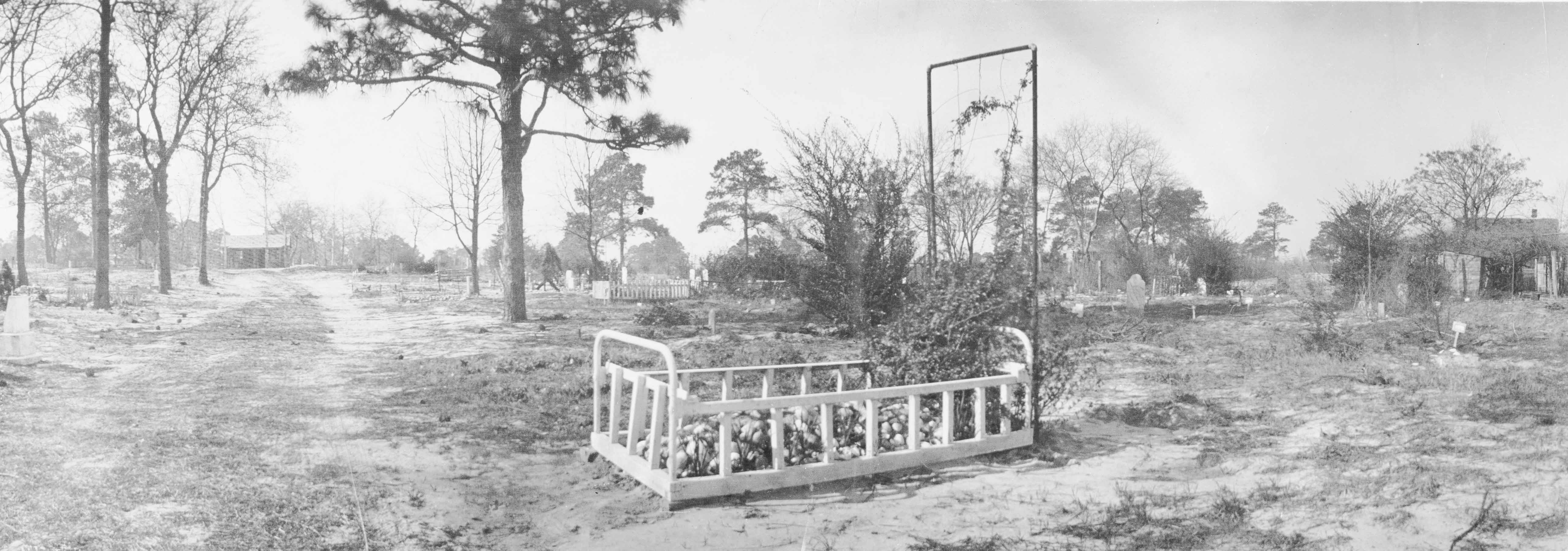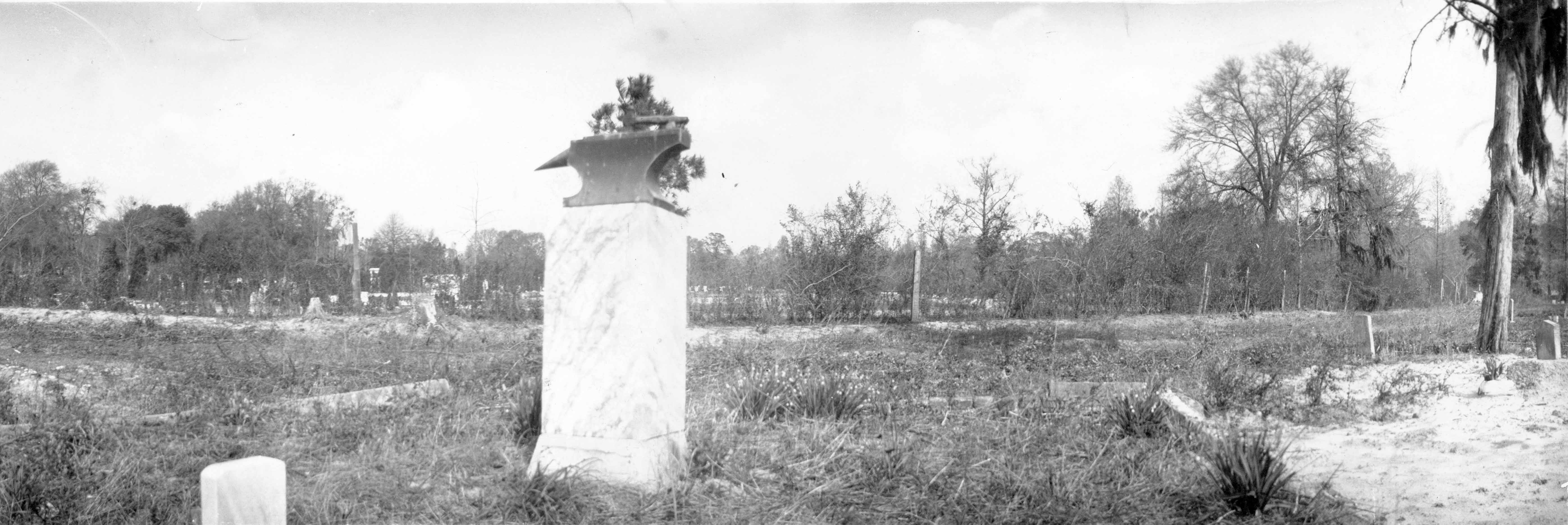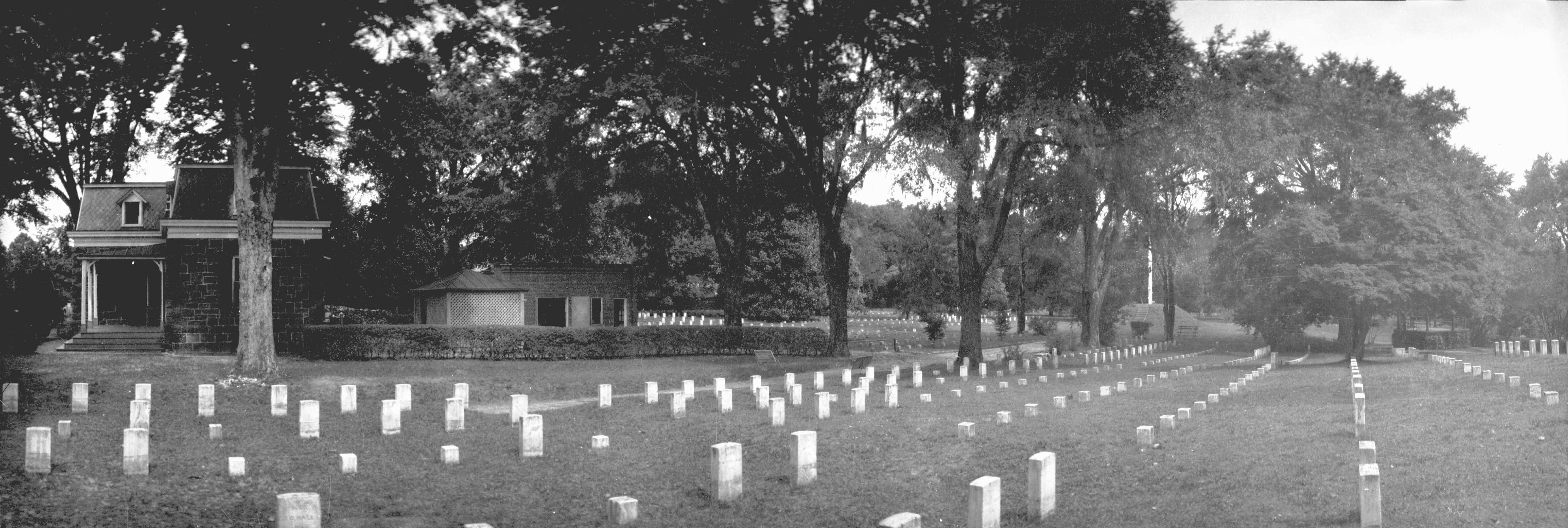by Susan Taylor Block
(Click on photos to magnify. Click again and scroll to see more.)
Of Oakdale, Virginia Bellamy Ruffin stated in 1961, “Surely, no man has loved this beautiful old cemetery as did Mr. Moore.” To him, Wilmington’s Oakdale Cemetery was not just a handsome burial ground. It is a vast natural space filled with marble and granite reminders of rich biographies and intricate genealogical charts. The first burial at what Louis T. Moore called the “Peaceful City of the Dead,” occurred in 1855, after little Annie deRosset died at age six.
Mr. Moore was an authority on Oakdale. He knew the stories, and told them succinctly and well. By birth, he fell comfortably into a position that made him feel, “at home” amid the shadows and brilliant sun shafts of Wilmington’s Second City.” By natural bent, he studied the people whose physical remains rest in a beautiful and disquieting space, located just north of Rankin Street.
“Possibly,” he said, “there is no other cemetery in North Carolina, or in the entire South, that contains within its boundaries the graves of so many famous men and women, who have had a direct and marked influence in the recording of history in the United States.”
The handsome mausoleum pictured centrally holds the remains of Bear family members. The grave of Arthur Bluethenthal, a member of the Jewish reformed congregation of Wilmington’s Temple of Israel, is marked by the bronze plaque in the foreground. Bluethenthal was educated at Princeton where he proved himself to be a gifted scholar and athlete. Arthur Bluethenthal volunteered for the French Aviation Foreign Legion before the United States entered World War I. A martyr for the cause, he died June 5, 1918, when his plane was shot down over Coivrel, France.
Mr. Bluethenthal was New Hanover County’s first casualty of World War I – and his death seemed a horrible loss. Handsome, buff, and “a presence,” his absence pained many Wilmingtonians. Arthur Bluethenthal was memorialized in the naming of Bluethenthal Field, a local air landing strip first utilized in 1928. (35)
Louis T. Moore loved visiting Oakdale Cemetery, Wilmington’s shadow city. Meandering through its “neighborhoods” was recreation to him, even though it made his young daughters tap their feet. “He would stop to look at monuments and we would play hopscotch,” said his daughter, Florence Moore Dunn.
One of Mr. Moore’s favorite Oakdale stories concerned Nancy Adams Martin (see dark cross in center), who died at sea in 1857. The 24-year-old woman was tied to an oak chair, lowered into an empty cask, then covered in rum and whiskey for the trip home. The sad story gets even more morose. Louis T. Moore tells it very well in his book, Stories Old and New of the Cape Fear Region.
Nancy Martin’s tombstone is unusual, but so are many at Oakdale. According to Wilmington historian William M. Reaves, many builders and contractors made graveyard monuments as a sideline. J. C. and R. B. Wood, James Walker and the firm of Keen and Huston all provided sculpture and headstones and footstones.
“Oakdale is a lesson in how a cemetery of its size and age can develop and change, over time,” said Eric Kozen, current director. “The cemetery includes antebellum and Victorian-period traditions, as well as lawn and memorial park creations.” (13)
In 1912, Louis T. Moore, the 27-year-old city editor of the Evening Dispatch, owned a vehicle the Morning Star called “a handsome Moon torpedo car.” One summer afternoon in July, he drove three friends, Arthur B. Williams, Mrs. Harry Anderson and Rosalie Davis, from Wrightsville Beach to Oakdale Cemetery. Doubtless, Mr. Moore was giving one of his famous tours, relating stories that brought life to the cold stone monuments. Sometimes known for taking “his hands off the wheel in a fit of description,” he kept his passengers a bit on edge. However it happened, his car plunged to the bottom of an embankment that day, and a reported noted that the “Moon went down.”
Mr. Moore hurried to the nearest telephone and called for assistance. Help came in the “form of an ancient and antiquated mule accompanied by several men. After the mule had been duly attached to the car and persuaded by the stout application of a stout sapling that his proper vocation in life was to pull, the Moon rose once more … and the party proceeded to drive to Wrightsville Sound where they took the suburban car for the beach.” (10)
In late afternoon on Confederate Memorial Day, May 10, 1934, the Tide Water Power Company Drum Corps used mournful percussion to bring the crowd to order. Organized by members of the United Daughters of the Confederacy, the annual event brought a varied group to Oakdale Cemetery: the Wilmington Light Infantry, Boys’ Brigade, Junior Choir, Spanish American Veterans, American Legion Auxiliary, local Civil War veterans (including B. F. Hall), a men’s quartet, and speakers Cyrus D. Hogue, the Rev. Andrew J. Howell, Mrs. C. Wayne Spencer, Mrs. T. L. Speiden and Louis T. Moore.
Mrs. Spencer organized a boys’ choir for the event. They sang “Tenting Tonight.” The boy on the right, with his hands in his pockets and wearing light-colored knickers, is Bradford Tillery, N. C. Superior Court judge from 1970 until 1988. To his right is Wayne Spencer, Jr. Delmas Haskett is third from right, front, in the Wilmington Light Infantry formation.
Rose O’Neal Greenhow’s grave at Oakdale Cemetery has long been a favored for solemn ceremonies. However, Mrs. Greenhow, a beautiful spy, was anything but subdued. A passionate woman with a powerful temper, she peppered her writings with the phrase, “It makes my blood boil!” Despite the fact that Rose Greenhow did manage to cause the Union some problems, details of Civil War espionage methods might have caused U. D. C. members to call for smelling salts. (31)
Here, a profusion of flowers decorates the grave of Col. Walker Taylor (1864-1937), founder of Wilmington’s Brigade Boys and Girls Club. Col. Taylor based the local group, founded Valentine’s Day, 1896, on the Boys’ Brigade Companies of Scotland, conceived and developed by William Alexander Smith. Presently, the Wilmington Brigade serves over 1800 youngsters who live in New Hanover and Pender counties.
The graveside tent bears the name of Andrews Mortuary, a company that had its beginnings in the Woolvin Mortuary business, established in 1850. Leon P. Andrews started work as an assistant to Mr. Woolvin before World War I. Andrews wrote to his mother from the front stating that if Mr. Woolvin gave him a raise when he returned from the war, he would go back to work for him. Leon Andrews purchased the Woolvin business in 1922. It remains an Andrews family business today. (20)
Henry Bacon, Jr., lived in Wilmington throughout much of his youth, while his father was overseeing construction of “The Rocks” at Fort Fisher. Bacon grew up to become an architect, and grew famous in 1911, when he was chosen to design the Lincoln Memorial. He kept ties with many Wilmingtonians, particularly the MacRae family for whom he did residential design work, rare in his career.
Henry Bacon died in 1924. His New York funeral took place at St. George’s Episcopal Church, at Washington Square, in New York. After the service, thousands of mourners filed by “to look upon his face one more time.” His body was then transported to Wilmington by train for interment at Oakdale Cemetery. Andrew’s Mortuary handled the funeral arrangements. Pallbearers included Hugh MacRae, John D. Bellamy, Jr., Walter Parsley and M. W. Jacobi, and Louis T. Moore. Wilmington’s architects served as honorary pallbearers.
As in other tributes, Bacon’s eulogy included his concrete achievements and his pursuit of excellence. But among old friends, he was remembered also for some less well-known talents. He was “good at marbles, good at tops, good at baseball. We can see him now, the stellar pitcher, and hear the howls of the fans: ‘Wrap it ‘round his neck, Harry.’ And so it was throughout his life. When the call came for supreme execution in his line of activity, Henry Bacon was on the mound.”
The gravemarker design is from a report drawing Henry Bacon made in Turkey when visiting his brother, Francis, an archaelogist, about 1882. Originally, the work appeared on the Tomb of Publius Varius, in Assos. (14)
At Oak Grove Cemetery, near the Masonic Temple on South 17th Street, traditional tombstones were scarce. Mourners often fashioned grave markers from objects meaningful to the dead. A modest toy might adorn a child’s; a rolling pin, a cook’s. “On each rude mound there is some simple, quaint and perhaps to a cruel world burlesque, tribute, that speaks silently and eloquently of a love that still lives,” wrote a Morning Star reporter of Oak Grove, in 1917.
This iron bed marked the grave of a woman who was an invalid for many years. Louis T. Moore was fascinated with the site. When journalist Bill Sharpe visited Wilmington to take slick promotional shots for the N. C. Tourism Bureau, he planned on shooting pictures of young beauty Katherine Meier at area beaches. Louis T. Moore intervened, dead set on injecting some local history. “Mr. Moore insisted we also go to Oakdale, Pine Forest and Oak Grove cemeteries. At Oak Grove, I posed in my pretty new clothes against a rusting iron bed,” reminisced Katherine Meier Cameron, in 1999.
Oak Grove Cemetery was established in 1870. By 1891, it already contained 2000 graves, nine-tenths of them holding the remains of African Americans. Local history librarian Beverly Tetterton and chronicler Bill Reaves estimated, based on researching thousands of death certificates, that 10,000 people were buried at Oak Grove before 16th and 17th streets were cut through the cemetery, in 1961. (873)
Mr. Moore also led Bill Sharpe and Katherine Meier to Pine Forest Cemetery, to photograph the grave of Jip Jones (September 23, 1894- May 18, 1904). Jip, who belonged to a black family identified only as the Joneses, was obviously dealt more than his share of good dog genes. Mr. Moore wrote that the canine’s “antics and maneuvers interested all members of the family and all neighbors as well.”
Jip’s tombstone inscription deserves high marks for pithy writing: “Here lies Jip Jones. The only dog we ever knew who attended church every Sunday.” (11)
Pine Forest was established as an African-American cemetery in 1860, incorporated in 1869 and chartered in 1933. Many distinguished Wilmingtonians have served on the Pine Forest board of directors: Alfred Howe, Louis LeGrand, James W. Telfair, Valentine Howe, Elijah Lane and James K. Cutlar are among them.
Pictured here is the grave of Alfred Hargrove (1819-1898), a blacksmith who started work as a slave, hired out to the Wilmington and Weldon Railroad. After the Civil War, he established a successful business on the north side of Market Street between Seventh and Eighth streets. When he died in 1898, at the age of 78, his family decided to make his anvil he worked on for fifty years part of his gravesite. The hammer was welded to the anvil to discourage thieves; sadly, both anvil and hammer have disappeared. (721)
Bellevue Cemetery, established in 1872, is located on Princess Place Drive. It was the final resting place of Charles William Stewart and his son, William Elmer Stewart, who both were electrocuted in 1925. Newspapers sporadically had chronicled their escapades for years. “C. W. Stewart was arrested at his forty gallon still, located ten miles west of Wilmington, in Brunswick County. 200 gallons of beer was found under the floor of the very plain building,” stated the Morning Star, in 1923.
Like Hydra coiled, every time a Stewart still was destroyed it rose again on another site. Long before Miranda rights, frustrated prohibition officers goaded the men and Charles and Bill Stewart murdered two of them. Despite the fact that the men were bootleggers and killers, they were folk heroes to some Wilmingtonians who were outraged by their execution. (25)
This is National Cemetery about 1928. In 1949, Louis T. Moore recognized a remarkable black family that is buried there. “Harriet Bolden recently died at the advanced age of 104 years. She was buried July 7, 1948 in the National Cemetery here in the same grave with her husband Lewis Bolden. The latter lived to be 105 years old. He was buried November 9, 1930,” wrote Mr. Moore.
“Harriet, as a slave, was owned by the family of Governor Dudley. She often recalled the kindness and consideration of her owner and that she played in the rear yard of Governor Dudley’s home at Front and Nun Streets now owned by Wilmington Elks.
“So far as is known, Lewis Bolden was the first Negro from North Carolina to enlist in the United States Navy after the Emancipation Proclamation by President Lincoln. He enlisted January 31, 1864 and received an honorable discharge, February 1, 1867. His rating was First Class Boy, which is unknown in naval circles today. He was assigned to the USS Senapee which was classed as a Third Rate Steamer.
“That this respected colored family had highly commendable patriotism is attested by the fact that Lewis Bolden enlisted in the United State Navy in 1864; two of his sons served in the Spanish-American War, one of whom is buried in the St. Louis National Cemetery and three grandsons participated in World War II. A most unusual feature is that all six male members of this Negro family served their country in three wars, chose the Navy as their field of operations.”
In 1999, the Boldens’ granddaughter, Mary Etta Fields, recalled that Mr. Moore interviewed her mother, Mrs. Rebecca Hargrove, at her home at 1216 South Second Street. The visit lasted three hours. It was one of many interviews Mr. Moore conducted with local African Americans. (28)
Copyright: Susan Taylor Block (Text) and New Hanover County Public Library (Photos)

